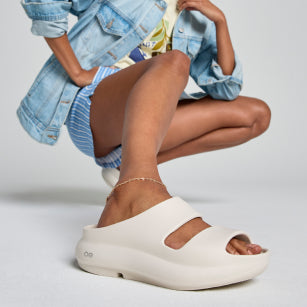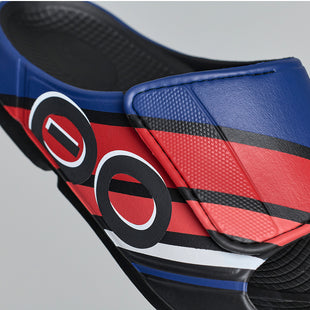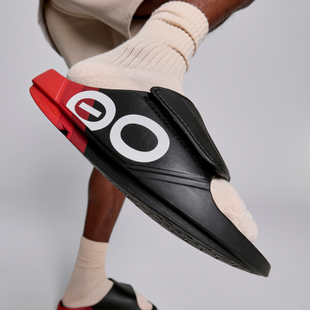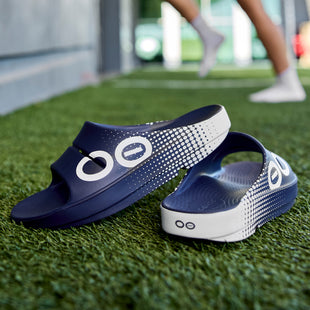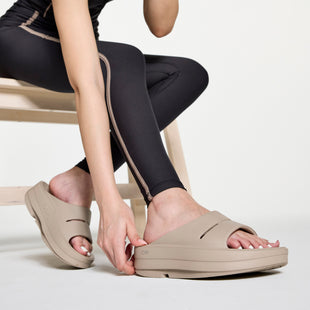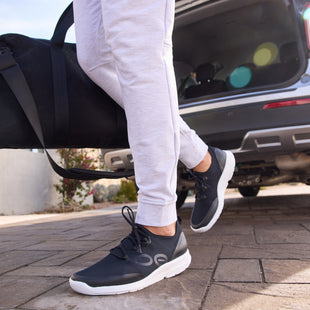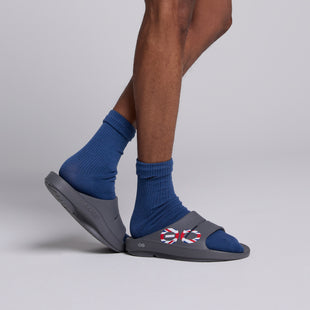Keep moving – gently
The temptation to collapse and stay there is real. But keeping your body moving, even slowly, helps prevent stiffness from setting in. A short walk after the race is more helpful than it sounds. It encourages circulation, flushes out lactic acid and helps muscles begin the recovery process.
Your feet, in particular, will be feeling the effects. They’ve taken the full force of every step and are often the first place soreness shows up. Changing out of your race shoes into something more supportive – ideally with cushioning and arch support – can make an immediate difference. Recovery footwear like OOFOS is designed specifically for this moment, giving your feet a break without losing the ability to move around comfortably.
Refuel and rehydrate
Even if you don’t feel hungry straight away, it’s important to eat within a few hours of finishing. Focus on replenishing what your body has lost: carbohydrates to restore energy, protein to support muscle repair, and fluids to rehydrate. Include a pinch of salt with your meal or choose snacks with natural sodium to help with electrolyte balance.
Keep sipping water or a recovery drink throughout the day, rather than downing large amounts at once. Hydration is a process – give your body time to absorb what it needs.
Address soreness early
Delayed onset muscle soreness usually peaks 24–48 hours after the race, but you’ll likely feel some discomfort straight away. A short stretch session, time with a foam roller, or simply lying down with your feet elevated can all help reduce swelling and ease tension.
It’s also worth thinking ahead to your evening routine. A warm shower, loose clothing and supportive footwear can all help you wind down. You may find that recovery shoes feel more comfortable than slippers or bare feet – especially on hard hotel floors or at home.
Rest – properly
Sleep is the single most powerful tool in your recovery toolkit. You may struggle to settle after the adrenaline of the race, but the sooner you can shift into rest mode, the better. Avoid caffeine, limit screen time, and create a quiet space where your body can begin to relax.
If you’ve trained for weeks or months, give yourself permission to enjoy the pause. Let your body absorb the effort before you start thinking about the next challenge.
And if you’re looking for one simple way to support your recovery from the ground up, slipping into a pair of OOFOS could be your easiest win – helping your feet recover as the rest of you does the same.

